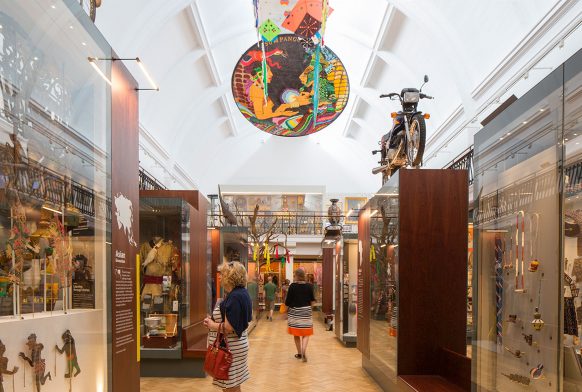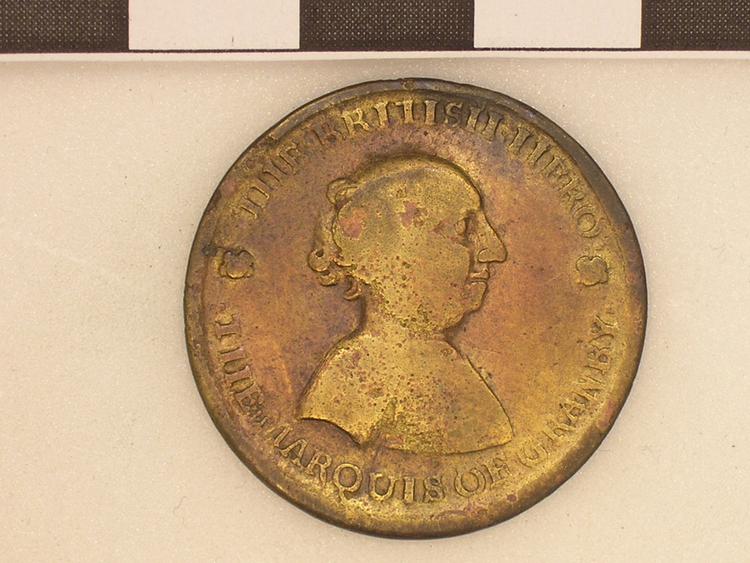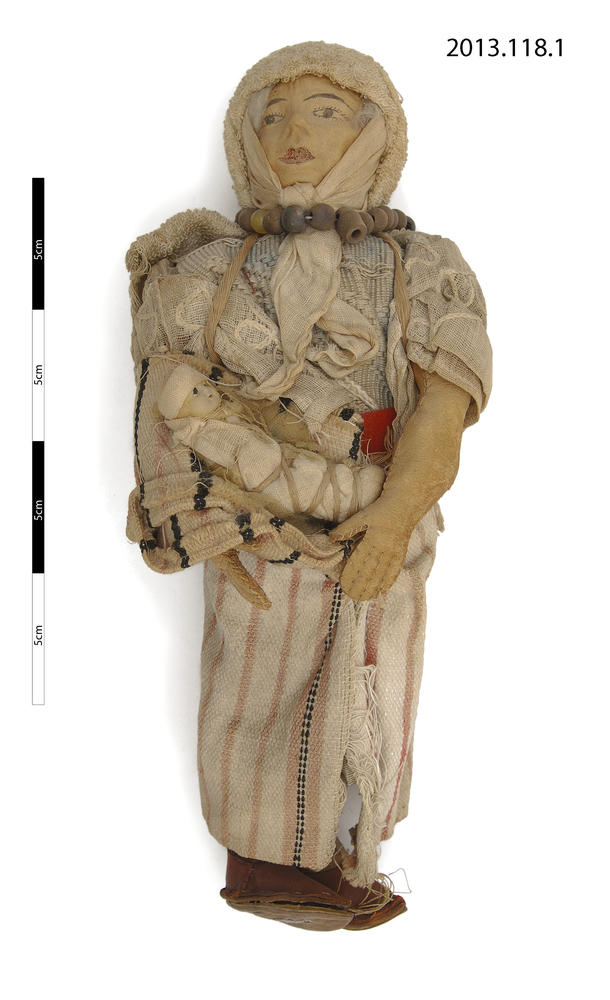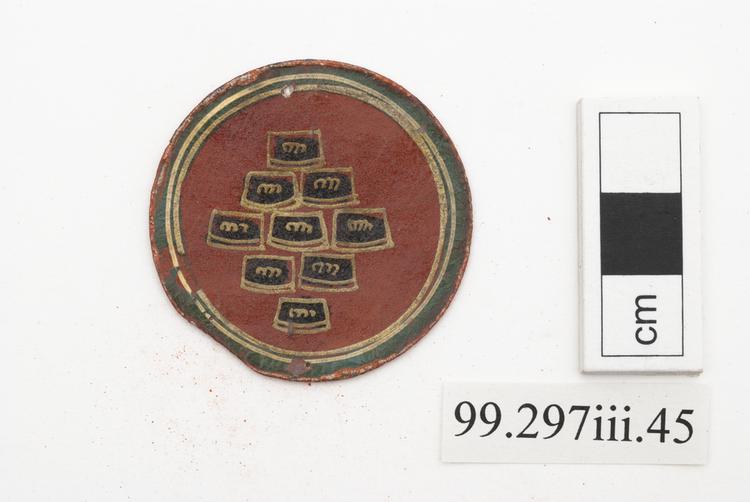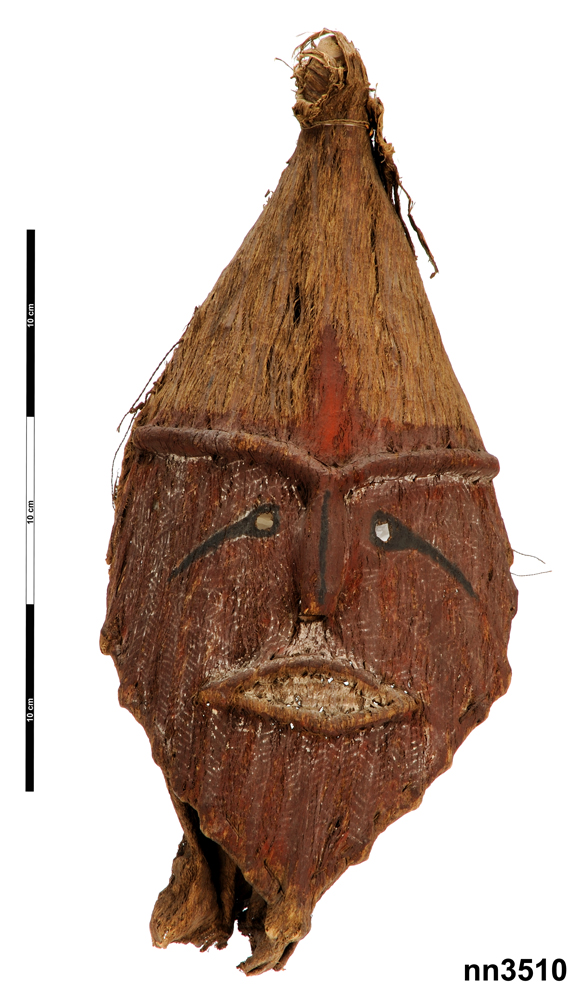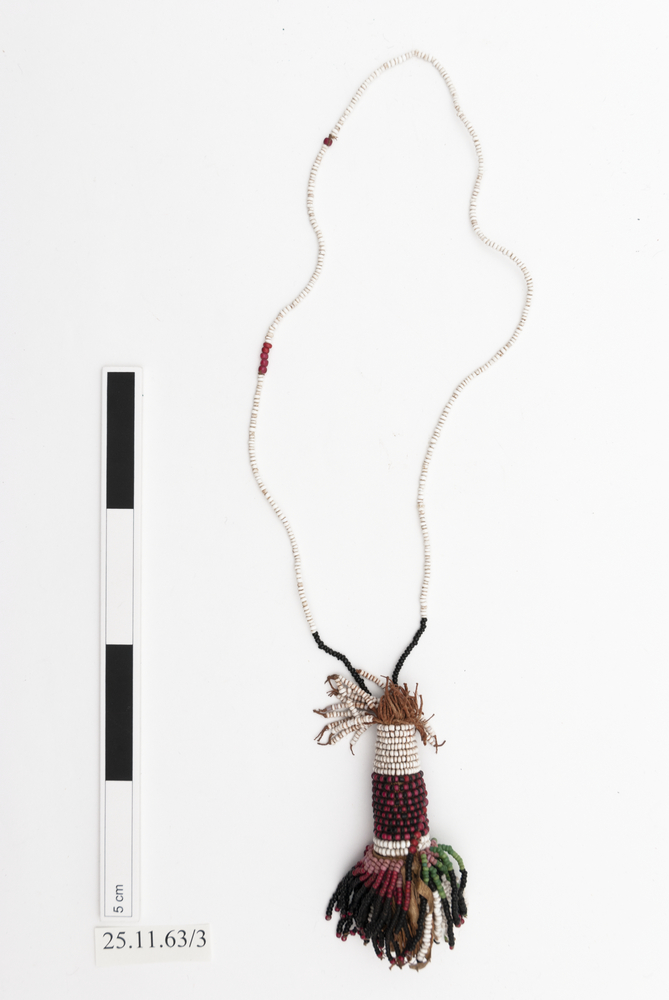
Small beaded figure made to be worn around the neck as a pendant. The central core is composed of tightly bound cloth to which the beads and beaded tassel skirt are attached.
Pendant figures similar to the present examples are usually classified as South Sotho. However, like with some other South Sotho beadwork there is a crossover with Zulu beadwork. For a related doll (udoli), see Local History Museum, Durban (accession number 95/1508) in Dell, ed, 1998 page 159 and KwaZulu Cultural Museum and Local History Museums, 1996 page 159. Other Southern African peoples, such as the Ndebele, also make small, suspended beadwork figures. Unable to stand upright on their own, the South Sotho pendant figure was intended to be hung around the wearer’s neck by the long beaded chain. The central core is composed of tightly bound cloth to which the beads and beaded tassel skirt are attached. Said to resemble an infant encircling its mother’s neck, pendant figures were worn by young unmarried women. In 1908, Captain Fuller donated a South Sotho figure to the British Museum (Af1908,-.357), but of the larger, standing type similar to Horniman Museum object number 10.101. References: KwaZulu Cultural Museum and Local History Museums, 1996, 159 Nel and Liebhammer, 1998, 151-159.



